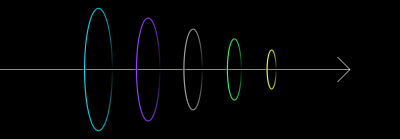Google’s Marketing Blueprint: AI at Every Funnel Stage
GML 2025 marks a strategic shift from siloed tactics to a unified, AI-first marketing architecture.

At this year’s Google Marketing Live, the message was clear: Google isn’t just rolling out new features; it’s introducing a new AI-driven architecture for advertising.
Rather than treating upper-, mid-, and lower-funnel tactics as separate, Google’s latest updates are designed to create an integrated system that uses AI to personalize user journeys, streamline shoppable experiences, and provide end-to-end measurement that closes the loop between media and business outcomes.
From smarter search to performance-driven video, the platform is giving advertisers more real-time insights and control over how they drive results at every stage of the funnel.
The bottom line: This isn’t just a product refresh. It’s a blueprint for scaling growth in an AI-first marketing ecosystem.
1. The Future of Search and Performance Max: More Signals, Greater Transparency
Google is reimagining search as more than a keyword-based engine. It’s becoming an AI-curated, multimodal experience that reflects how today’s users actually explore the web. With 5 trillion annual searches a year across all age groups (especially Gen Z), search remains Google’s most powerful signal of consumer intent. But the surface—and strategy—are changing. Search is no longer just text. It’s visual, conversational, and predictive—and AI is guiding the journey:
- AI Overviews now reach 1.5 billion users, increasing and query volume, though click-through rates (CTRs) are starting to decline as users find answers directly in results.
- Circle to Search, already live on 250 million Android devices, accounts for 10% of searches among active users.
- Google Lens handles over 25 billion visual queries monthly.
These aren’t cosmetic changes. They’re unlocking new, richer intent signals. And Google is building tools to help advertisers capitalize.
AI Max for Search Campaigns for instance, lets advertisers instantly layer on AI-powered enhancements like creative optimization, keyword expansion, and smarter bidding—without restructuring campaigns. Brands using AI Max are reporting conversion lifts of up to 27%.
While Performance Max has been a growth engine, advertisers have long wanted more visibility. Now they’re getting it:
- Channel-level reporting finally breaks out campaign performance by surface (e.g., YouTube, Search, and Discover).
- Search terms insights reveal which queries actually lead to conversions, closing a key data gap.
But transparency here isn’t just about reporting—it’s about unlocking action. Knowing what channels are working allows marketers to tailor creative assets accordingly. Seeing real search terms lets them fine-tune messaging for maximum relevance.
These updates are part of a broader shift: giving advertisers more control, more precision, and more speed in how they optimize across the funnel. As AI rewires the way people interact with search, Google is making sure brands aren’t just keeping up—they’re positioned to lead.
2. The Future of Video: YouTube as a Full-Funnel Engine
YouTube has long been a discovery platform. But it’s quickly evolving into something more powerful: a full-funnel performance channel that spans inspiration to conversion.
- Viewers now watch over 90 million hours of shopping content every day.
- YouTube is the most-watched streaming platform on TV screens in the U.S.
- Users say they trust YouTube creators 98% more than influencers on other platforms.
Google is leaning into that trust by making video even more actionable:
- Shoppable CTV ads let users buy directly from their TV screen or send products to mobile for later checkout.
- Shoppable Mastheads turn YouTube’s most prominent real estate into an interactive shopping experience.
But perhaps the most important innovation is in measurement: Google is launching attributed brand search, a new, always-on metric that tracks how often YouTube viewers later search for your brand on Google. It’s a breakthrough that connects upper-funnel video impressions to bottom-funnel intent.
For marketers, that means finally being able to answer the question: Did our video campaign actually move the needle? And with clearer attribution comes a smarter way to optimize spend, scale what’s working, and prove video’s values across the funnel.
3. The Future of Data: AI-Ready, Privacy-First Measurement
The foundation of AI-powered performance is data. And Google is reinforcing that foundation to be stronger, more accessible, and more privacy-safe.
- Incrementality testing is now more accessible than ever. Thanks to new Bayesian methodologies, advertisers can get statistically valid results with budgets as low as $5,000, making experimentation possible for more brands.
- Confidential Matching is expanding beyond Customer Match to power tools like enhanced conversions and Google Analytics. This ensures first-party data is protected, encrypted, and used as intended.
- Data Manager now consolidates online and offline data sources including—from web to CRM—and provides diagnostics and step-by-step guidance to help advertisers improve their data setup and ROI.
The biggest shift: Marketers no longer need to choose between privacy and performance. With the right infrastructure in place, the two can co-exist and pave the way for smarter models, better targeting, and more impactful measurement.
Why This Moment Matters
Google’s latest updates aren’t just tactical improvements. They’re strategic moves that reflect where marketing is headed. These shifts are designed to help advertisers unlock growth at every stage of the funnel by aligning with how people search, shop, and engage today.
They signal a future where:
- Search is visual, predictive, and personalized.
- Video is trusted, shoppable, and measurable.
- Measurement is democratized, actionable, and always-on.
- Data is clean, connected, and confidently activated.
Yes, AI is the engine. But the real opportunity isn’t just adopting new tools. It’s rethinking how all the pieces connect: media, data, creative, and measurement must operate as a single, AI-powered system.
In a world where AI is rewriting the rules of media, Google is building the infrastructure for a new era of performance marketing.
The brands that lean in now won’t just grow faster. They’ll help define what growth looks like in the AI era.


